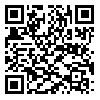1. mer Sciences in partial fulfillment of the requirements for the degree of Doctor of Philosophy.98-101.
2. G.Close, A. & Guidry Moulard, J. & B.Monroe, K. (2011)." Establishing Human Brands: Determinants of Placement Success for First Faculty Positions in Marketing." Journal of the Academy of Marketing Science.39(6). 922-941.
3. Gilchrist, P. (2005). "Local heroes or global stars, in L .Allison , ( Eds) , the global politics of sport : the role of global institutions in sport" . London: Routledge.pp. 395-414.
4. Summers, J. & Morgan, J. (June, 2008)." More than just the media considering the role of public relations in the creation of sporting celebrity and the management of fan expectations." Public Relations Review, 34 (2). pp. 176-182.
5. Andrews, D. & Jackson, S. (2001)." Sport celebrities , public culture , and private experience. In Andrews, D.L. (Ed)" , sport stars: the cultural politics of sporting celebrity, London, Routledge, c2001,p.1-19 United kingdom.
6. Varalakshmi.T(2013). Is Celebrity Endorsement Ethical or Unethical in Brand Building. INDIAN JOURNAL OF APPLIED RESEARCH. Volume : 3 | Issue : 12. Pp. 288-291.
7. Erdogan, B. Z. (1999). Celebrity Endorsement: A Literature Review. Journal of Marketing Management, Vol. 15, 291-314.
8. Belch, G. E. & Belch, M. A. (2001). Advertising and Promotion – An Integrated Marketing Communications Perspective. 5th Edition, New York: McGrow Hill. Pp.332-337.
9. Ericsson, L. & Hakansson, E. (2005). Athletes as celebrity endorsers. Case studies from Sweden. Lulea University of Technology, Sweden. Available at: http://www.epubl.ltu.se
10. Sharma, Sumita (2006), “Celebrity endorsement is it the only survival recipe for marketers?”, Indian Journal of Marketing, Vol. 36(10), pp3-7.
11. Erdogan, B. Zafer, Baker, Michael J. and Tagg, Stephen (2001), “Selecting celebrity endorsers: The practitioner’s perspective”, Journal of Advertisement Research, Vol. 41(3), pp. 39-48.
12. Tellis, G. J. (1998). Advertising and Sales Promotion Strategy. Reading: Addison – Wesley Educational Publishers Inc. pp.199-204.
13. White, D. W., Goddard, L., Wilbur, N. (2009). The effects of negative information transference in the celebrity endorsement relationship. International Journal of Retail & Distribution Management. Vol. 37, No. 4, 322-335.
14. Kulkarni, S. A. & Gaulkar, S. U. (2005). Impact of celebrity endorsement on overall brand. Available at: http://www.indianmba.com/Occasional_Papers/OP88/op88.html, [2009-04-26].
15. Cordiner, R. (2001)." Sport wakes up to the value of brands". Sports marketing (14608359), (75):13.
16. Pringle, H. & Binet, L. (2005)." How marketers can use celebrities to sell more effectively". Journal of consumer research, 4(3): 201-214.
17. Cronin, J.M. (2003)." The effects of celebrity endorsers on attitudes towards the advertisement, brands and purchase intentions". PHD Dissertation, university of Albany: New York.pp.234-240.
18. Ohanian,R.(1990). "Construction and Validation of a Scale to Measure Celebrity Endorsers Perceived Expertise, Trustworthiness and Attactiveness." Journal of Advertising 19 (3), 39-52.
19. Hovland, C. I.,Janis, I.L., Kelley, H. H.(1953). “Communication and Persuasion: Psychological Studies of Opinion Change, New Haven: Greenwood Publishing Group”. Pp.111.114.
20. Hovland, C. I.,Weiss, W.(1951). “The Influence of Source Credibility on Communication Effectiveness”. Public Opinion Quarterly 15(4),635-650.
21. Ohanian, R. (1991) The impact of celebrity spokespersons' perceived image on consumers' intention to purchase. Journal of Advertising Research. Vol. 31, No. 1, 46-52.
22. Johansson, J. & Sparredal, J. (2002). Celebrity endorsements: A case study of Axa and the Ludmila Engquist incident. Lulea University of Technology, Sweden. Available at: http://www.epubl.ltu.se
23. Clow K. E., James K. E., Kranenburg K. E., Berry C. T. (2006). The relationship of the visual element of an advertisement to service quality expectations and source credibility. Journal of Services Marketing, 20/6, 404-411.
24. Shimp, T. E. (2000). Advertising, promotion and supplemental aspects of integrated marketing communications. 5th Ed., Fort Worth: Dryden Press.
25. Bergstrom, C. & Skarfstad, R. (2004). Celebrity endorsement. Case study of J. Lindeberg. Lulea University of Technology, Sweden. Available at: http://www.epubl.ltu.se
26. Thomson, M. (2006). "Human Brands: Investigating Antecedents to Consumers’ Strong Attachments to Celebrities." Journal of Marketing, 70 (July): 104–119.
27. Banyte, Jurate; Stonkiene, Egle & Piligrimienė, Zaneta (2011). Selecting celebrities in advertising: The case of Lithuanian sports celebrity in non-sport product advertisement. Economics & Management , 16, 1215–1224
28. Parmentier, M. & Fischer, E. (2009). "The Pitfalls Of Fame: Insights from Human Brands". University HEC Montreal & York University. Pp.98-101.
29. Arai,A. Jae Ko, Hwan Chang,Y. Chang,K. (2012) ." Understanding Athlete Brand Image in Global Sport Markets: A Cross-National Study among Japan, South Korea, and USA" . North American Society for Sport Management Conference( NASSM 2012)
30. Aaker, D. (1996). "Building strong brands". New York: Free Press
31. Keller, K. (junuary,1993)." Conceptualizing, measuning, and managing customer – based brand equity". Journal of Marketing. 57(1):1-22.
32. Berry, L. (2000)." Cultivating service brand equity". Journal of the academy of marketing science, 28 (1) :128-137.
33. Landeta J. Current validity of the Delphi method in social sciences. Technological a. Forecasting and Social Change 2006; 73(5); 467-82.
34. Fry M, Burr G. Using the Delphi technique to design a self-reporting triage survey tool. Accid Emerg Nurs 2001 Oct; 9(4): 235-41.
35. Windle PE. Delphi technique: assessing component needs. J Perianesth Nurs 2004 Feb;19(1): 46-7.
36. Powell C. The Delphi technique: myths and realities. J Adv Nurs 2003 Feb; 41(4): 376-82.
37. Beretta R. A critical review of the Delphi technique. Nurse Res 1996; 3(4): 79–89.
38. Fathivajgar K. [Barnamerizyeh amozeshe zemne khedmate karkonan]. 1st ed. Tehran:Samt. 2004. Persian






